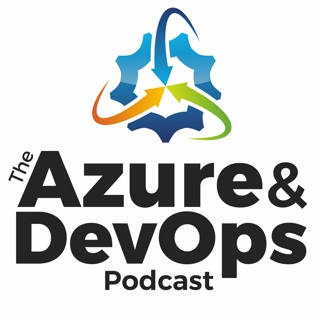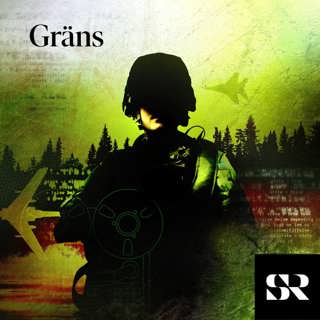
Mathias Brandewinder: Math and Machine Learning using .NET - Episode 208
Mathias Brandewinder enjoys solving challenging business problems with software engineering and applied mathematics techniques, and some creativity. His current focus is on functional programming with F#, machine learning, and data science, and on putting them together to help companies make smarter decisions with their data. He loves teaching and mentoring, and is a regular speaker at conferences and community events all over the world. A former Microsoft F# MVP, he holds an MS in Operations Research from Stanford, an MS in Economics from University of Paris X, and an MBA from ESSEC. Topics of Discussion: [3:15] Mathias talks about how his love of math got him into programming. [5:57] Mathias discusses what intrigued him about F# and the scripting environment. [6:29] What about when a computer's version of a number doesn't really line up with the math version of a number? [11:51] What issues does F# help more than C#? [15:22] What is Mathias's favorite charting component for .NET? [18:27] What inspired Mathias to write his book, Machine Learning Projects for .NET Developers, and is there a new book on the horizon? [20:09] Mathias is here to say math can be genuinely fun! [24:03] Jupiter appears to be an on-the-fly evaluator of code that runs on a server somewhere through the browser. [29:13] What other math-related libraries should we be aware of, and what are some other resources we can check out? Mentioned in this Episode: Architect Tips — New video podcast! Azure DevOps Clear Measure (Sponsor) .NET DevOps for Azure: A Developer's Guide to DevOps Architecture the Right Way, by Jeffrey Palermo — Available on Amazon! Jeffrey Palermo's YouTube Jeffrey Palermo's Twitter — Follow to stay informed about future events! Programming with Palermo programming@palermo.net Mathias Brandewinder Website Mathias Brandewinder Bio mathias@brandewinder.com Five obscure charting tips with Plotly.NET Machine Learning Projects for .NET Developers DiffSharp Math.Net Numerics F# Get Started with OR-Tools for C# Want to Learn More? Visit AzureDevOps.Show for show notes and additional episodes.
29 Aug 202231min

Jeffrey Palermo: The Process of Architecture - Episode 207
This is a special episode. I wanted to interrupt our fabulous stream of expert guests to talk about a topic that I think needs to be talked about, and that is architecture. What is it? What should we think about it, and how do we approach the process of architecture? To derive the verb, how do we go about determining and implementing a fitting architecture? To architect. If you are in this role, what is it that you do? What thought progression do you use? I'll share some thoughts on that from 25-plus years of programming, and then I have a very special announcement at the end, so be sure to check that out. Topics of Discussion: [2:19] Architecture is the intersection of the process that we use for software and the structure we want the software to be. Right there in that intersection is where leadership is required. [4:22] What are the building blocks of architecture, and what is the progression from the smallest building block up to the most complex and large software system? [9:24] If you're creating a very, very small piece of software, you don't need much architecture. [11:08] Jeffrey breaks down the term "monolithic" and how it relates to code. [11:15] If monolithic is bad, isn't "polylithic" bad too? [15:18] What makes an application an application, and not just a library? An application is greater than a library because it has abstractions, and then it has configurations. [28:12] Special announcement: new video show is launched! Check out Programming with Palmero. Mentioned in this Episode: Architect Tips — New video podcast! Azure DevOps Clear Measure (Sponsor) .NET DevOps for Azure: A Developer's Guide to DevOps Architecture the Right Way, by Jeffrey Palermo — Available on Amazon! Jeffrey Palermo's YouTube Jeffrey Palermo's Twitter — Follow to stay informed about future events! Programming with Palermo programming@palermo.net Want to Learn More? Visit AzureDevOps.Show for show notes and additional episodes.
22 Aug 202231min

Damian Brady: GitHub Actions - Episode 206
Damian Brady is a Developer Advocate at GitHub. He's a developer, speaker, and author specializing in DevOps, MLOps, developer process, and software architecture. Formerly a Cloud Advocate at Microsoft for four years, and before that, a dev at Octopus Deploy and a Microsoft MVP, he has a 20-plus year background in software development and consulting in a broad range of industries. In Australia, he co-organized the Brisbane .Net User Group and launched the annual DDD Brisbane conference. Topics of Discussion: [2:45] How does Damian describe the landscape between Microsoft and GitHub? [4:12] What is it about automated development that jazzes Damian up? [5:57] Damian describes the lay of the land with GitHub Actions. [10:39] Does GitHub have a package repository? [14:19] For your build, you can keep them as just artifacts that are for that particular workflow, or you can create a package and put it into one of those package repositories for later retrieval. [14:25] Damian talks about the transition to deploying to the first pre-production environment in your chain. [19:12] What do the non-secret variables look like? [22:09] To what extent is there still overlap from Azure, and how does it deviate? [26:22] There are two options: there are actions that are in the marketplace, and then you can also run your own scripts. [30:10] Damian and his team are building around a pretty core experience where you have a project that you're deploying to multiple environments. [34:24] How is Octopus Deploy similar? How is it different? Mentioned in this Episode: Architect Tips — New video podcast! Azure DevOps Clear Measure (Sponsor) .NET DevOps for Azure: A Developer's Guide to DevOps Architecture the Right Way, by Jeffrey Palermo — Available on Amazon! Jeffrey Palermo's YouTube Jeffrey Palermo's Twitter — Follow to stay informed about future events! Damian Brady On DevOps for Data Science and Machine Learning Chris Patterson on Github Actions Want to Learn More? Visit AzureDevOps.Show for show notes and additional episodes.
15 Aug 202237min

Greg Leonardo: Architecting for Azure - Episode 205
Greg is a Cloud Architect that assists organizations with cloud adoption and innovation and is currently a Public Cloud Architect at AT&T. He has been working in the IT industry since his time in the military and is a developer, teacher, speaker, and early adopter. Greg has worked in many facets of IT throughout his career and is currently the president of TampaDev a community meetup that runs #TampaCC and various technology events throughout Tampa. Greg holds a certification as a Microsoft Certified Azure Solutions Architect Expert, Microsoft Certified Trainer, and is an Azure MVP. Topics of Discussion: [2:45] Businesses still struggle with how to manage costs, even with all the new things that have surfaced in Azure. [3:30] Understanding your cost structures is critical. [6:20] What does the mindset look like? [6:43] What the heck is a Microsoft Certified Azure solutions architect expert? [9:09] The biggest thing that Greg can impress upon architects is that you're not always in control of your own destiny. [10:01] What is Greg's favorite Diagramming Method or diagramming tool? [11:52] How does one go about making decisions and projecting what the monthly bill is going to be for a given application? [16:20] When building a service, Greg tries to start in the serverless arena, and then moves up from there. [25:13] What is the direction we are heading with Azure? [28:33] The go-to solutions that Greg has his teams use for just their individual network security for their own computer when they're not in a corporate building. Mentioned in this Episode: Architect Tips — New video podcast! Azure DevOps Clear Measure (Sponsor) .NET DevOps for Azure: A Developer's Guide to DevOps Architecture the Right Way, by Jeffrey Palermo — Available on Amazon! Jeffrey Palermo's YouTube Jeffrey Palermo's Twitter — Follow to stay informed about future events! Greg Leonardo Takes an Azure Deep Dive Want to Learn More? Visit AzureDevOps.Show for show notes and additional episodes.
8 Aug 202231min

Daniel Roth: Blazor Futures - Episode 204
Daniel Roth is a principal product manager on the ASP.NET team working on ASP.NET Core, Blazor, and other web features. He has previously worked on various parts of .NET, including System.Net, WCF, XAML, and ASP.NET. His passions include building frameworks for modern Web frameworks that are simple and easy to use. Topics of Discussion: [2:45] Daniel talks about the high points of his career that led him to the ASP.NET team, along with a few changes he has seen in the industry, along the way. [6:25] The developer ecosystems have been opened up. [7:40] Daniel talks about Blazor Hybrid. [9:43] If you have a web app, and you want to just reuse that UI within a native client app, you can have a common set of Blazor components that are used across both. [10:28] Daniel talks about .NET 7 and how they are taking it to the next level. [14:46] The Blazor Native Experiment is available through a project called the Mobile Blazor Bindings Project. [24:03] Jeffrey asks Daniel about his favorite ways that people should be testing the UI level of Blazor Applications. [27:03] What people should be expecting in the next year. [34:16] Tooling and debugging is an area we can continue to actively invest in. Mentioned in this Episode: Architect Tips — New video podcast! Azure DevOps Clear Measure (Sponsor) .NET DevOps for Azure: A Developer's Guide to DevOps Architecture the Right Way, by Jeffrey Palermo — Available on Amazon! Jeffrey Palermo's YouTube Jeffrey Palermo's Twitter — Follow to stay informed about future events! "Daniel Roth On Web Development With .Net 6" "Egil Hansen on Blazor Testing with bUnit" Want to Learn More? Visit AzureDevOps.Show for show notes and additional episodes.
1 Aug 202240min

Kendall Roden: Azure Container Apps - Episode 203
Kendall is a Senior Product Manager for Azure Container Apps based out of Austin, TX. When she's not working, Kendall enjoys being outdoors, teaching spin classes, and hanging out with her cat, Koda. Topics of Discussion: [3:46] Kendall talks about starting in consulting and building her skill set in customer empathy and understanding the pain points that developers are experiencing. [4:13] Even if it makes you uncomfortable, lean in as much as you can to opportunities for technical training. [7:16] What interested Kendall in working on things that are more in running applications vs. doing frameworks for building applications? [8:09] Even if you're in operations at an organization, your overall objective is to help developers be more productive and focus on what's making the company money and help them operate on what their core value proposition is for their customers. [11:35] Kendall discusses Azure Container Apps and starts with App Service. [21:02] Is Kendall working on Windows adapting containers? [24:02] Do you have more control in container apps than you do in App Service, or does that limitation still stay the same? [30:45] Kendall forecasts the future of container ops adoption and that we will see more and more cohesiveness in terms of the Azure portfolio. [31:40] What does the pricing model look like? [41:54] Kendall would recommend at least starting with the Azure Architecture Center. Mentioned in this Episode: Architect Tips — New video podcast! Azure DevOps Clear Measure (Sponsor) .NET DevOps for Azure: A Developer's Guide to DevOps Architecture the Right Way, by Jeffrey Palermo — Available on Amazon! Jeffrey Palermo's YouTube Jeffrey Palermo's Twitter — Follow to stay informed about future events! Kendall Roden on Microsoft Cloud Kendall Roden Twitter The Azure Podcast Kendall Roden LinkedIn Kendall Roden GitHub Azure Container Apps Samples Azure-Samples Youtube.com/playlist?list=PL5rXtjltSImRsDw-sqr3wUDyG_IwlV_HN Azure Container Apps discord server Want to Learn More? Visit AzureDevOps.Show for show notes and additional episodes.
25 Juli 202244min

Steve Sanderson: The future of Blazor and WebAssembly - Episode 202
Steve Sanderson is working as a developer for Microsoft in the team that brings you the ASP.NET technology stack, IIS, and other web things. Previously he developed .NET software as a contractor/consultant for clients in Bristol and beyond, plus wrote some books for Apress, such as Pro ASP.NET MVC Framework. From time to time, he speaks at user groups and conferences and recently has been running a bunch of training courses on topics such as C#, SQL Server, and of course ASP.NET MVC. Steve has been instrumental in some very visible projects. He started the Knockout.js project in 2010, an early javascript UI framework. He also designed the Azure Portal architecture that anyone using Azure uses daily. Topics of Discussion: [4:07] Steve talks about the main steps that got him into Microsoft and his role in Blazor. [9:04] How does running SQLite in Blazor work? [13:35] Are there limitations on how long we can have it live between browser sessions? [15:36] Maui has been the biggest focus for the Blazor team throughout .NET. [22:36] What is the path of WebAssembly in the family of technologies? [23:11] What is WASI? [33:03] What does Steve see in the future and how might we be able to bridge more divides? [35:36] Steve mentions the different services to check out. Mentioned in this Episode: Architect Tips — New video podcast! Azure DevOps Clear Measure (Sponsor) .NET DevOps for Azure: A Developer's Guide to DevOps Architecture the Right Way, by Jeffrey Palermo — Available on Amazon! Jeffrey Palermo's YouTube Jeffrey Palermo's Twitter — Follow to stay informed about future events! Steve Sanderson .NET Blog WebAssembly Steve was a guest on the Azure DevOps Podcast back in episode 106 in September of 2020. Want to Learn More? Visit AzureDevOps.Show for show notes and additional episodes.
18 Juli 202239min

Greg Young: CQRS and EventSourcing- Episode 201
Greg Young is an independent consultant and serial entrepreneur. He has 10-plus years of varied experience in computer science from embedded operating systems to business systems and he brings a pragmatic and often unusual viewpoint to discussions. Greg coined the term "CQRS" (Command Query Responsibility Segregation) and it was instantly picked up by the community who have elaborated upon it ever since. He's a frequent contributor to InfoQ, a speaker/trainer at Skills Matter, and also a well-known speaker at international conferences. Topics of Discussion: [3:24] Greg talks about being poached from university and his path to computer science, starting in the lottery and horse racing systems. [7:25] Greg defines CQRS at the base level. [9:24] What is event sourcing? [11:25] How does it look in database technology? [19:19] How does asynchronous processing work with event sourcing? [22:44] Greg talks about causation ID and correlation ID. [26:49] If someone is running on Azure, what technology would be associated with the stream of event sourcing? [27:27] When you're event sourcing, your events are your concept of truth. [28:15] What's the relationship between event sourcing and CQRS? [31:16] How has Greg's method of explaining these concepts changed over time? [31:36] When you teach something, you both get a better understanding of the thing that you're teaching, and you get a better understanding of how to teach it to somebody. Mentioned in this Episode: Architect Tips — New video podcast! Azure DevOps Clear Measure (Sponsor) .NET DevOps for Azure: A Developer's Guide to DevOps Architecture the Right Way, by Jeffrey Palermo — Available on Amazon! Jeffrey Palermo's YouTube Jeffrey Palermo's Twitter — Follow to stay informed about future events! Greg Young Twitter Greg Young GitHub Event Store Greg Young YouTube Want to Learn More? Visit AzureDevOps.Show for show notes and additional episodes.
11 Juli 202238min





















